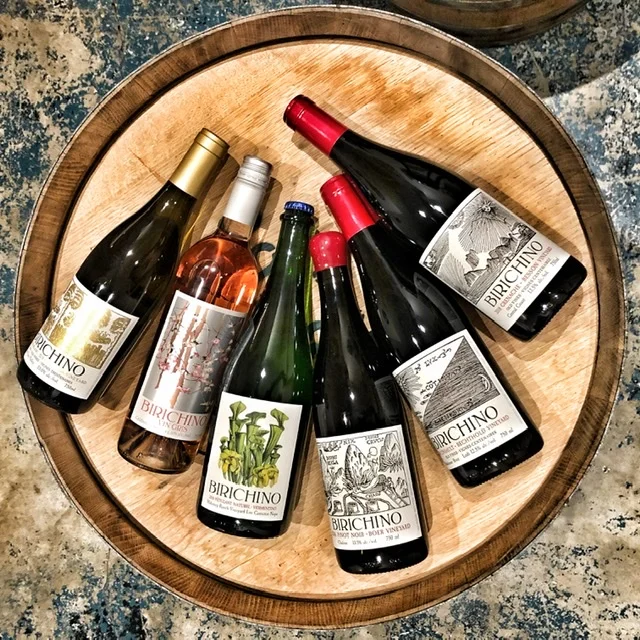Inventory Management: Why It’s Important & How to Get Started
Efficient winery management is more important now than ever—if 2020 has taught us anything, it’s that owners must set up their businesses to survive the most unexpected issues. Even with the height of the chaos past, change will continue as states move through phases of reopening and potentially even go back to lockdown if major outbreaks recur.
But beyond the unexpected, it’s important to track your business activity accurately to ensure you have the information you need to make sound business decisions. As a winery, it all starts with inventory—whether you begin with grapes from your vineyard, juice from another vineyard, or bulk wine, you have to track your process from inventory all the way through the income statement.
If you’ve struggled with inventory management in the past, this post is for you. We’ll explain how good inventory tracking processes contribute to overall lean business management, discuss the best methods of managing inventory, and provide a list of key questions you should be able to answer about your business.
What Is Lean Business Management?
Lean business management is all about efficiency. During times of crisis, it’s important to have complete visibility into your business performance so you can make quick, informed decisions. Consider the graphic below, starting at the right with “business decisions.” That’s the outcome you’re looking for. In order to make those decisions, you need accurate financial reports that tell you what your cash flow looks like, how your income is trending, and how profitable your business is.
To get those financial reports, you’ll need a chart of accounts that’s set up wisely, tracking revenues, expenses, assets, and liabilities related to your business. And you can’t get that without a general ledger that correctly pulls in cash, inventory, accounts receivable, accounts payable, investments, equipment, etc.
How do you get all that? You’ll need to record movements related to inventory, production, sales, equipment maintenance, and packaging. If you have the right processes in place to track those elements, you’ll get good data that can help you plan the future of your business.
Benefits of Good Inventory Management by Business Area
What can you gain from good inventory management?
Inventory
Inventory forecasting: Knowing what packaging materials to order and when, so you never run out of bottles, your preferred closures, or anything else you need.
Inventory costs: Has the cost of working with a certain supplier gone up astronomically over time? Are you spending too much on certain items? You can answer these questions when you accurately track your inventory and associated costs.
Production
Batch cost: Track the cost from grape to bottle so you can compare and plan YOY.
Batch details: Keep an eye on batches from afar, including inventory needed for each batch compared to what's on hand, current costs, current quantities packaged, and more.
Sales
Product performance: Know which products sell at the highest margin so that you can plan next year’s growing, purchasing, and production schedule accordingly.
Cost of goods sold: You can’t get an accurate COGS number without tracking the cost of all related inventory, production, and packaging items. Knowing this information helps you price your products appropriately to make a profit.
Operations & Accounting
Cost accounting: When you record all costs associated with production, from raw materials to packaging, you can use cost accounting to get an accurate picture of your finances and make informed decisions.
General ledger & chart of accounts: As shown in the illustration above, these records are vital for creating the balance sheets, income statements, and cash flow statements that help you evaluate your winery’s performance on an ongoing basis.
Report of Wine Premises Operations: When you diligently track inventory, production, and sales, filling out this report for the TTB becomes a much faster process. Inventory management software can even automate some of this for you.
Inventory Management Software vs. Spreadsheets
If you want to do inventory management right, you absolutely cannot do it in notebooks or on clipboards (paper can be lost or damaged) or whiteboards (information can easily be erased). These methods may work while your team is small and your production volume is low, but to get the insights you need as you grow, a reliable system of record is required. Keith Bishop, co-owner of Bishop’s Orchards Winery in Guilford, CT, put it this way: “As soon as you bring in other people and delegate, you need a trackable system for record keeping. Verbal or paper records can lead to discrepancies, inaccuracies and a lack of communication.”
For that reason, many wineries seek out software that can help. While you may start out with spreadsheets, you’ll find that they rely on complicated formulas that can easily break, and sharing them among team members isn’t an easy process. Sure, you can share a Google Sheet, but how do you communicate work orders associated with them or show relevant team members where the numbers came from? Plus, it’s difficult to forecast your future needs and reconciliation with your accounting software at the end of each month can be a nightmare.
Choosing a Software Solution
The right software will help you keep track of inventory, plan and record production activities, manage sales orders and invoices, and sync with your accounting software to make end-of-month reporting seamless. A cloud-based system (i.e. one that runs on the internet) allows you and your team to manage your business from wherever you are, so you can assign new work orders, keep an eye on cellar activities, or check in on sales from anywhere in real time. You’ll also be able to answer questions about your business that help you solve current problems and plan for the future with confidence. For example:
How much does it cost me to produce this wine?
What price will make me a profit on that item?
Based on forecasted sales, when should I order more packaging materials?
What is my COGS, and is the revenue I’m bringing in helping my winery grow this year?
Are all my inventory and sales activities accurately reflected in my accounting software?
Inventory management is just one aspect of great winery management software, so make sure you do your research. No matter which tool you choose, prioritizing inventory management in your winery will pay off. When you know your business intimately and can plan ahead, you’ll be able to handle any crisis that comes your way.
Josh McKinney, CEO of Ekos
This guest post was written for VineSpring by Josh McKinney, CEO of Ekos. Passionate about the start-up community and craft industry, Josh McKinney co-founded Ekos in 2014 to develop a business management software for craft producers. Today, Ekos works with craft breweries, cideries, and wineries in more than 40 countries to help them manage inventory, production, sales, and accounting in one centralized system.












